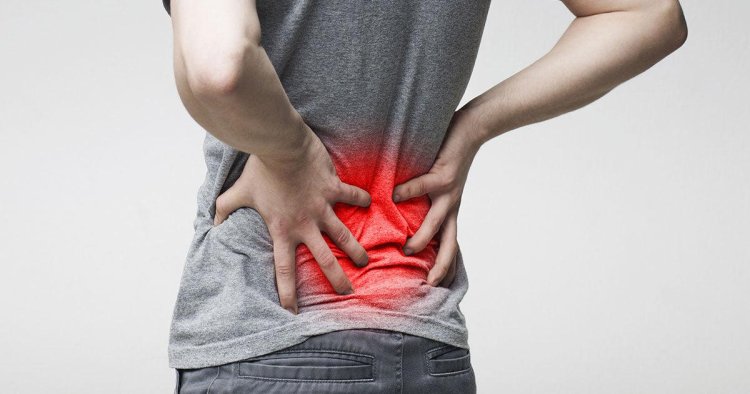Stronger Spine, Less Pain: Best Back Treatments
Discover the best back treatments to strengthen your spine, reduce pain, and improve mobility. Learn effective remedies for lasting relief.

Back pain is one of the most common ailments people face today, affecting millions worldwide. Whether it’s from sitting too long at a desk, lifting something incorrectly, or simply due to aging, back pain can be debilitating and significantly reduce quality of life. However, there is good news: strengthening your spine through various treatments can help alleviate pain, prevent further injury, and improve your overall well-being.
In this blog, we’ll explore the best back treatments to build a stronger spine, reduce discomfort, and help you get back to doing the things you love. From lifestyle changes to medical interventions, we’ll cover a range of options to suit different needs.
1. Physical Therapy: Strengthening the Core and Lower Back Muscles
One of the most effective ways to treat and prevent back pain is through physical therapy. Physical therapists are trained to assess your posture, movement patterns, and the condition of your spine and muscles. They can then design a customized exercise plan aimed at strengthening the muscles supporting your spine, which can lead to improved posture, reduced pain, and better mobility.
Strengthening the core and lower back muscles is particularly important for alleviating back pain. The muscles in the core, including the abdominals, obliques, and lower back, play a crucial role in supporting your spine and maintaining proper posture. By improving the strength of these muscles, you can reduce the strain on your back and improve your posture throughout the day.
Recommended Exercises:
- Pelvic tilts: Strengthen the lower back and abdominal muscles.
- Bridges: Engage the glutes, hamstrings, and lower back muscles.
- Planks: Strengthen the core muscles, including the abdominals and lower back.
2. Chiropractic Care: Spinal Adjustments for Pain Relief
Chiropractic care is another popular treatment for back pain. Chiropractors use hands-on techniques to adjust the spine, realigning vertebrae that may be out of place. Misaligned vertebrae can contribute to pain, muscle spasms, and inflammation. By adjusting these vertebrae, chiropractors help restore proper alignment, reduce pressure on the nerves, and promote better function of the spine.
Chiropractic care is often used in combination with other treatments like physical therapy. It’s especially beneficial for individuals with chronic pain or those who have experienced an injury to the spine.
While chiropractic adjustments can help relieve pain, they should be done under the supervision of a licensed chiropractor. It’s important to consult with your healthcare provider to determine if chiropractic care is appropriate for your condition.
3. Massage Therapy: Easing Muscle Tension
Massage therapy is an effective treatment for back pain, especially when muscle tension or stress is the main culprit. By targeting the muscles in the back, neck, and shoulders, massage therapists can release tight muscles, improve blood circulation, and promote relaxation. Regular massages can reduce chronic muscle stiffness, improve mobility, and decrease pain.
Some massage techniques that can help with back pain include:
- Deep tissue massage: Targets deep muscle layers to release chronic tension.
- Swedish massage: A gentler form of massage that promotes relaxation and reduces muscle tightness.
- Trigger point therapy: Focuses on specific muscle knots that cause pain.
Massage therapy is often combined with other treatments, such as physical therapy, for the best results. Many people find that regular massages help them manage back pain and prevent it from returning.
4. Heat and Cold Therapy: Immediate Relief
Using heat and cold therapy can provide immediate relief for back pain. Heat helps to relax muscles, improve blood flow, and reduce stiffness, while cold therapy reduces inflammation and numbs pain. Alternating between heat and cold can be highly effective for treating both acute and chronic back pain.
How to Use Heat and Cold Therapy:
- Cold packs: Apply ice or a cold pack wrapped in a towel to the affected area for 15-20 minutes, especially in the first 48 hours of an injury, to reduce swelling and inflammation.
- Heating pads: Apply a heating pad to the lower back for 15-20 minutes to promote relaxation and improve blood circulation. You can use a warm towel, hot water bottle, or specialized heat packs.
Using these therapies at home can be a simple yet effective way to manage back pain.
5. Medication: Alleviating Pain
In many cases, medication can be used to relieve back pain, especially if the pain is severe or chronic. Over-the-counter (OTC) medications like ibuprofen or acetaminophen are often sufficient to manage mild to moderate back pain. However, for more intense or persistent pain, stronger prescription medications may be necessary.
Prescription Medications:
- Nonsteroidal anti-inflammatory drugs (NSAIDs): These medications reduce inflammation and pain. Ibuprofen and naproxen are common OTC NSAIDs, but stronger versions may be prescribed for more severe pain.
- Muscle relaxants: These can help relieve muscle spasms that contribute to back pain.
- Opioids: In some cases, opioids such as Aspadol 100 mg (tapentadol) may be prescribed for short-term use to manage moderate to severe pain. Aspadol works by altering the way the brain and nervous system respond to pain, offering relief from acute back pain. However, due to the potential for dependence, it’s typically prescribed for short durations and under close medical supervision.
Aspadol 100 mg (Tapentadol) is particularly helpful for individuals suffering from severe back pain that doesn't respond to milder treatments. It’s important to follow your healthcare provider’s instructions when using such medications, as they come with the risk of side effects and dependence if used improperly.
6. Lifestyle Modifications: Preventing Future Pain
Preventing back pain is just as important as treating it. Small changes in your daily routine can have a big impact on spinal health. Here are a few lifestyle modifications that can help keep your spine strong and pain-free:
- Maintain good posture: Sitting and standing with proper posture helps reduce strain on the spine. Keep your back straight, shoulders relaxed, and avoid slouching when sitting.
- Ergonomic workspace: If you work at a desk, ensure your workstation is ergonomically friendly. Your chair should support the natural curve of your spine, and your computer screen should be at eye level.
- Regular exercise: Regular physical activity strengthens the muscles supporting your spine, improves flexibility, and promotes overall health. Activities like walking, swimming, and yoga are great for back health.
- Weight management: Maintaining a healthy weight reduces the strain on your spine and lowers the risk of back pain.
7. Surgery: A Last Resort for Severe Cases
For individuals with severe, persistent back pain that doesn’t respond to other treatments, surgery may be necessary. Surgery is usually reserved for conditions such as herniated discs, spinal stenosis, or scoliosis, where the pain is caused by structural issues in the spine.
Some common surgical procedures include:
- Discectomy: Removal of a herniated disc pressing on a nerve.
- Spinal fusion: Fusing two or more vertebrae together to stabilize the spine.
- Laminectomy: Removal of part of a vertebra to relieve pressure on the spinal cord.
Surgery should always be considered as a last resort, after all other non-invasive treatments have been explored.
Conclusion
Back pain doesn’t have to be a permanent part of your life. By incorporating a combination of physical therapy, chiropractic care, medication, and lifestyle changes, you can strengthen your spine, reduce pain, and improve your quality of life. Additionally, medications like Aspadol 100 mg (tapentadol) can be helpful for managing moderate to severe back pain when used under proper medical supervision.
Remember, it’s important to consult with a healthcare provider to determine the best course of action for your specific needs. A combination of treatments tailored to your condition can help you achieve a stronger, healthier spine and a life free from the limitations of back pain.
What's Your Reaction?



















